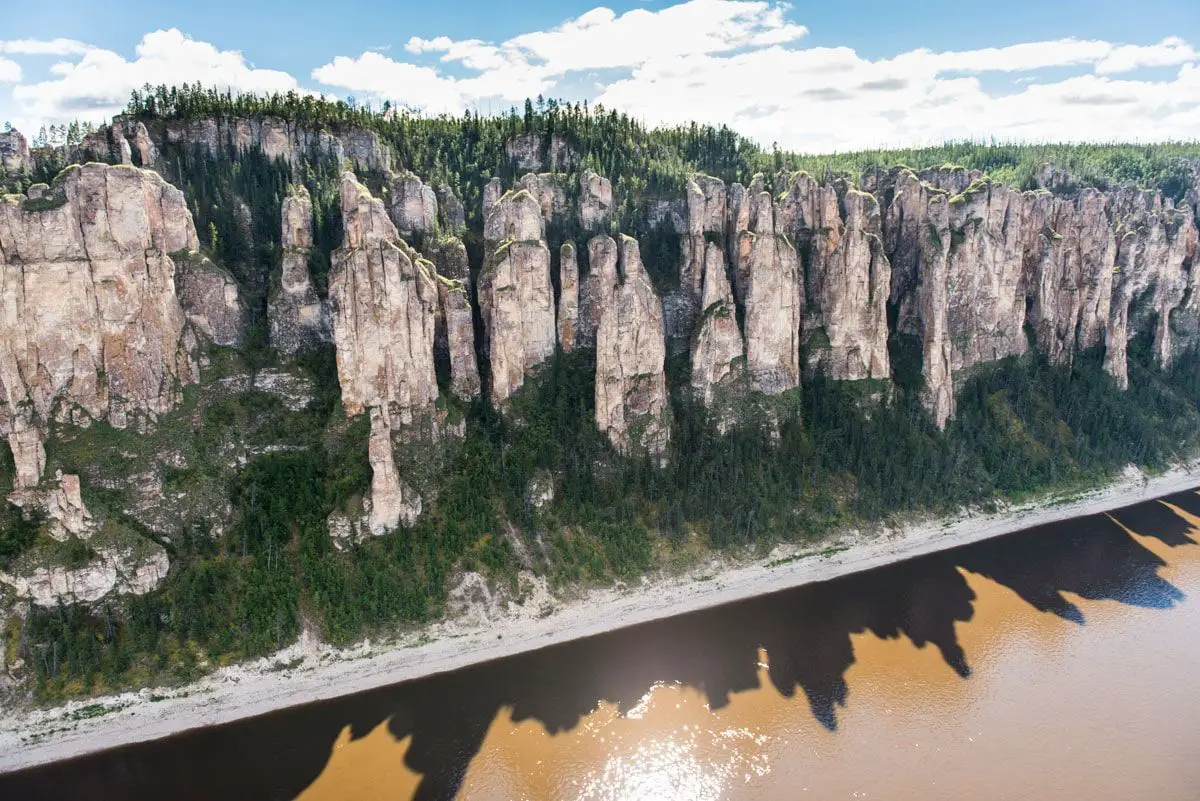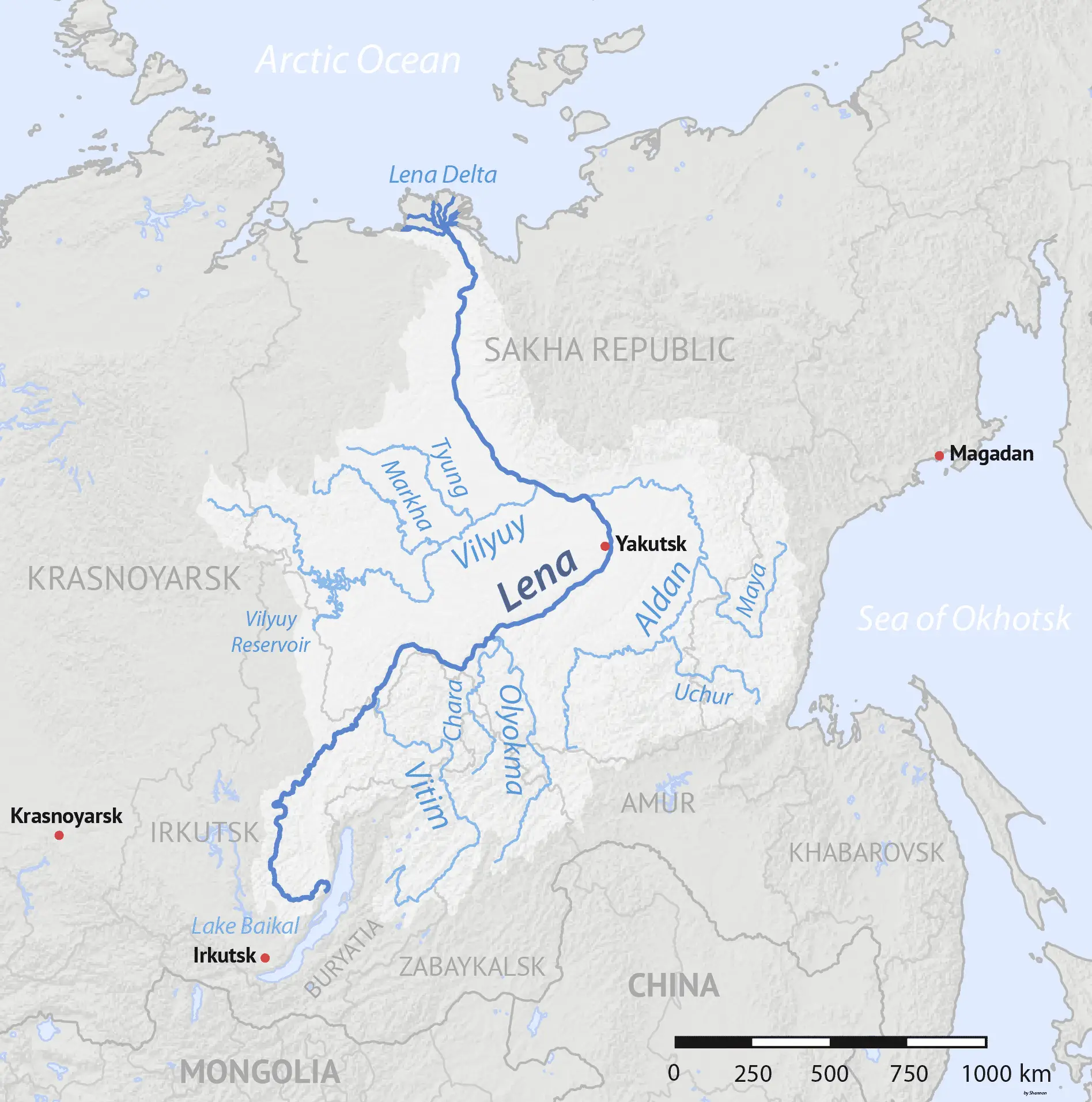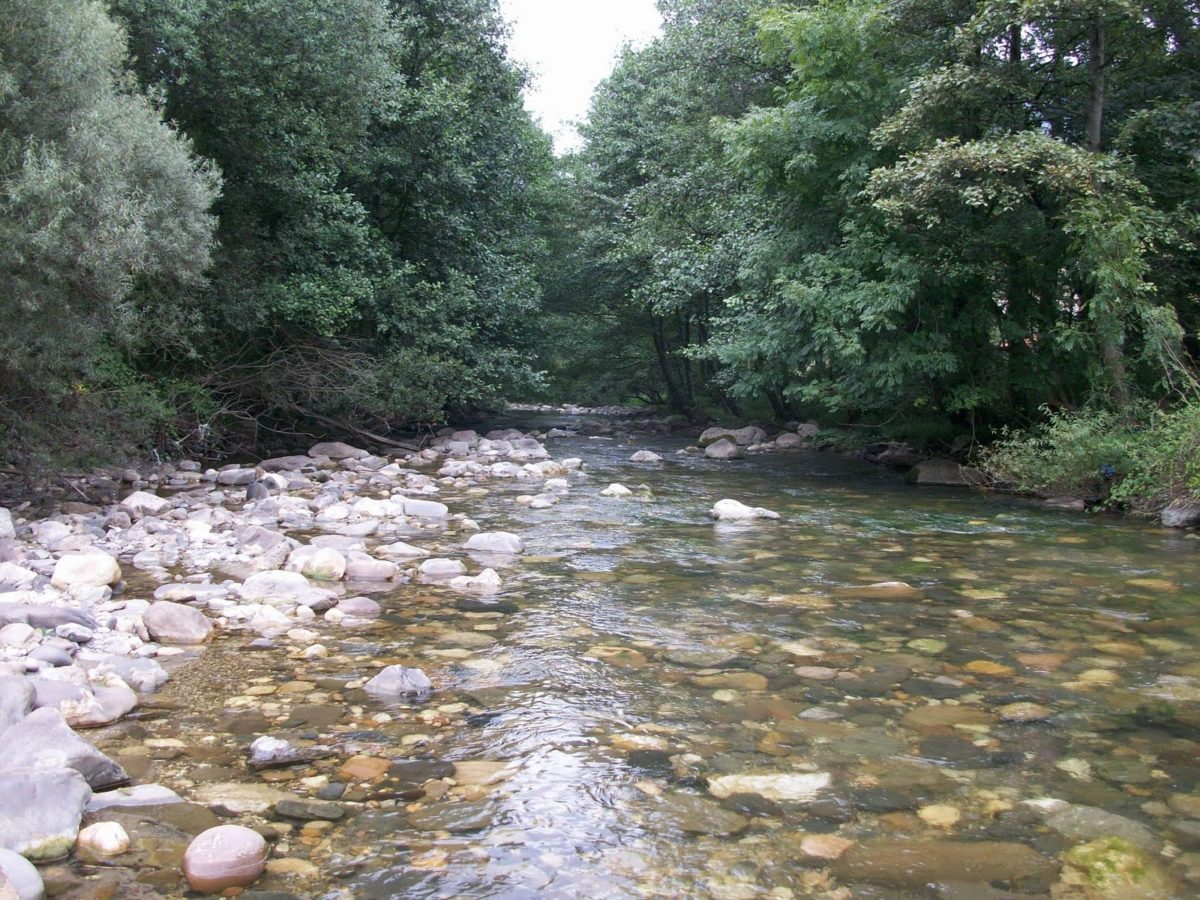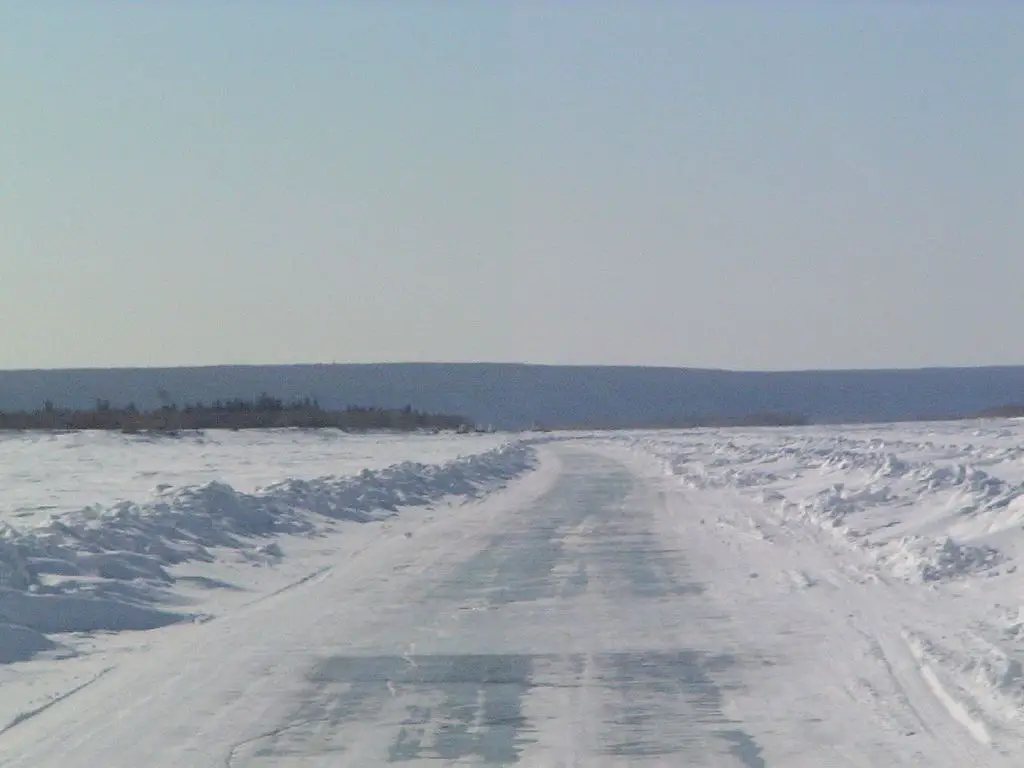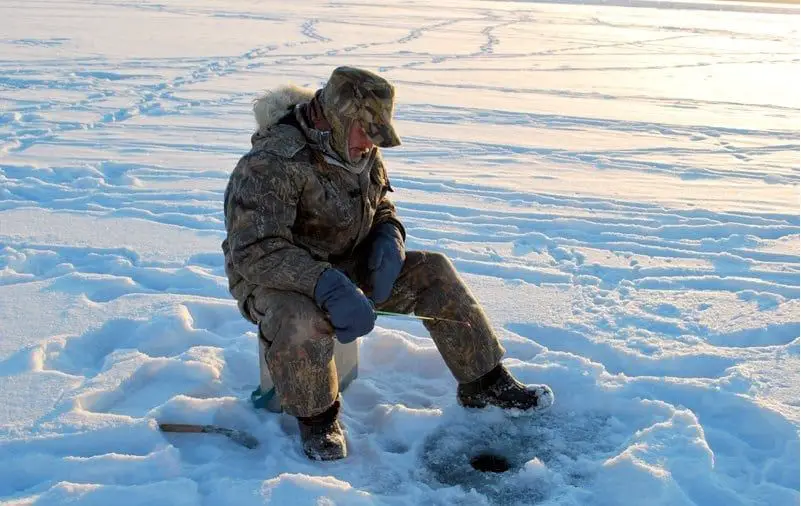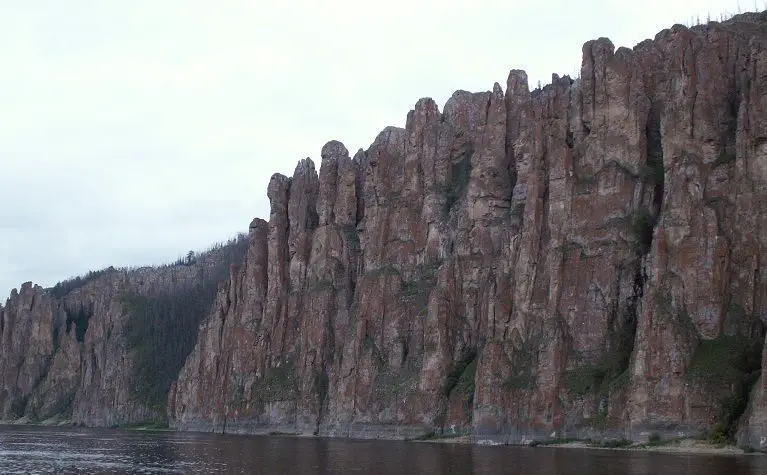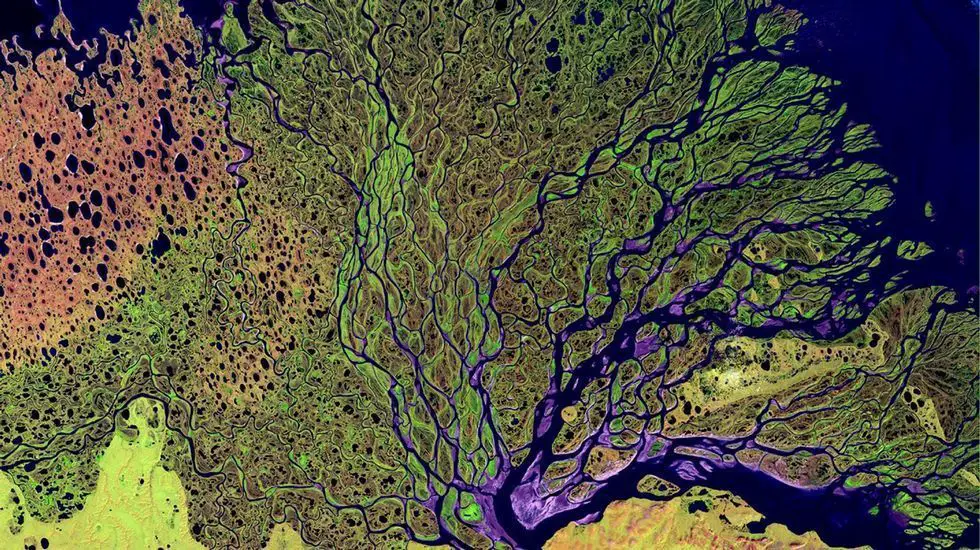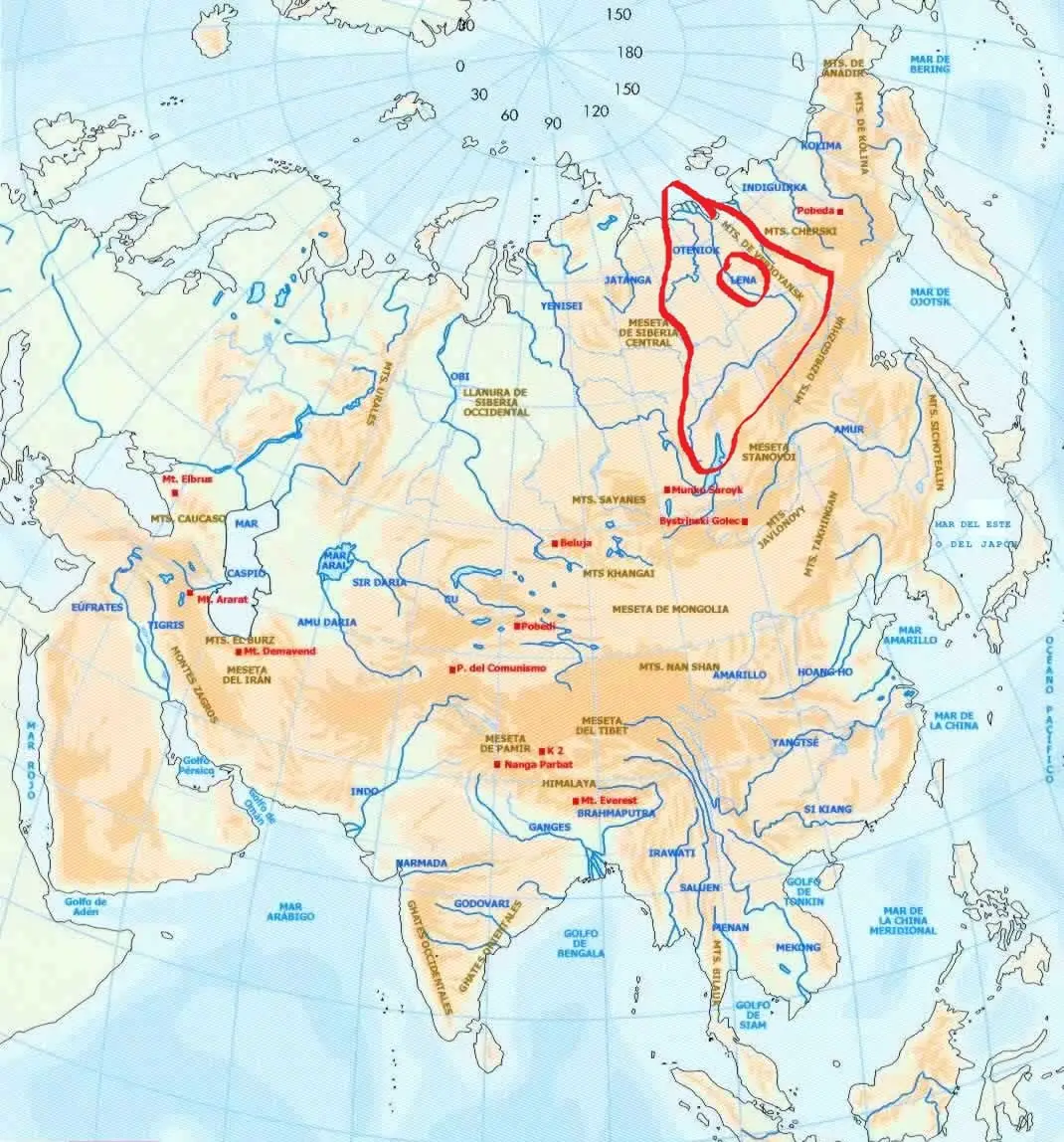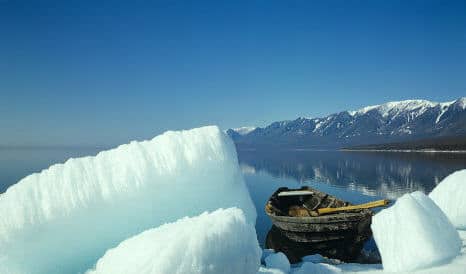Last Updated on September 2, 2023 by Hernan Gimenez
If you want to know everything about this majestic river, to see beautiful landscapes untouched by man, to learn about its origin and its entire course, I invite you to read everything about it, so that you can find out why the Lena River, the longest river in Russia, remains frozen for seven months of the year and is the main waterway in Eastern Siberia.
The Lena River, majestic, imposing, with spectacular landscapes, is one of the few rivers in the world that has retained its original course and all that surrounds it, as it has not suffered from human intervention. It is the only river in the world that serves as a road artery both when it is flowing and when it is frozen. It connects several cities in cold Siberia.
Indice De Contenido
Location and map of the Lena River
It originates in the Baikal Mountains, west of the lake of the same name, about seven kilometres from the lake, and is located in eastern Russia-Siberia. It lies in a small mountain range in southern Siberia.
The river flows northwest, then north, its course is four thousand four hundred kilometres and its width is thirty kilometres. It ends at the Laptev Sea in the Arctic Ocean. A few kilometres before it reaches the sea, it forms a very large delta of about 400 kilometres, with some flat islands.
Characteristics of the river
The Lena River has unique and very specific characteristics. It is divided into three sectors, identified by some of its main contributors. The first sector is from the source to the Vitim River, the middle sector is from the Vitim River to the Aldán River and the last sector is from the Aldán River to the sea.
According to the geographical studies carried out, the Lena River receives the waters of more than two thousand rivers, which is one of its most peculiar characteristics. Among the most outstanding for their influence on the Lena River are the Kirenga, the Oliokma, the Aldan, the Vitim and the Viliui, the latter making it larger.
The river Lena is rather narrow in its first sector, then it widens in part of its second sector, when it receives the rivers Aldán and Viliui, until it reaches a width of fourteen kilometres. From then on, as it receives the other tributaries, it continues to widen.
Towns through which the Lena River passes
The few cities around the Lena River include Yakutsk and Lensk.
The Lena River is almost entirely navigable, that is, when it is not frozen, which is very few months of the year (five months, from April to October). The rest of the year, seven months from November to May, it remains frozen and is navigable by dog sled. From May, when it thaws in the delta, it becomes a wetland where many birds come to enjoy the pleasures of the river.
Flora and fauna of the Lena River
In the Lena River you can find a great variety of species, we are talking about twenty-eight species of mammals, as well as a great variety of insects, about four thousand, and between forty-five and fifty species of fish. As for birds, we can see the common eider, the peregrine falcon that nests in the area, the black-faced goose and the Steller’s eider.
Because of its cold waters, there is a small variety of fish that come here especially looking for a quiet place free of people to spawn, we have the arctic cisco, the chum salmon, the white coregonus, the burbot among others.
In the spring, when the ice melts and the water flows, we can see the varied and beautiful flora and fauna. Some aquatic plants grow in the cold waters, we can see grasslands, in the wet tundra of the delta beautiful plants like the Arctic poppy sprout, in the more marshy areas we find taiga. We can also see plants of the Draba type, which are small with beautiful flowers, and Eriophorum, commonly called dandelion.
Mainland of the Lena River
The Lena River is a long Asian river, exclusively Russian, flowing into the Russian coast, considered the second largest river in Russia, the first being the Yenisei River, ranked fifth among the rivers of Asia and ninth in the world.
Asia is a large and vast continent, and although it does not have many lakes, it is home to some of the most important lakes in the world, such as the Caspian Sea, the largest in the world with a surface area of three hundred and seventy-one square kilometres, and the Aral Sea, with sixty-eight square kilometres. The latter has lost about sixty per cent of its surface area (see article: Mackenzie River).
The few freshwater lakes on the Asian continent are also of great importance, for example Lake Baikal, with a large surface area of thirty-one thousand four hundred and ninety-four square kilometres, is the deepest lake in the world, with a depth of one thousand seven hundred and forty-one metres, this lake possesses one fifth of the liquid fresh water on the planet and is the source of the Lena River. In Siberia is the Baljash, with a surface area of sixteen thousand nine hundred and ninety-six square kilometres.
Hydrography
The hydrography of the continent is very small, but very important, as it has some of the longest rivers on the planet, most of which are navigable. The longest rivers on the continent are the Yenisei, which is five thousand five hundred and seventy kilometres long, the Obi, which is five thousand four hundred and ten kilometres long, and the Lena, which is four thousand four hundred kilometres long. These rivers have their sources thousands of kilometres away, and when they reach their upper reaches and their lower reaches are still frozen, they cause great floods.
In the east of the continent, there are some rivers that are shorter than the above, but of great importance: the Sir Dara, which flows into the Aral Sea, is 2,794 km long, and the Amu Dara, which is 2,495 km long.
In the south and south-east, through the great plains, we can see the Indus River, which is three thousand one hundred and eighty kilometres long, the Ganges, which is two thousand five hundred kilometres long, the Brahmaputra, which is two thousand nine hundred kilometres long, the Saluén, which is two thousand eight hundred and fifteen kilometres long, there is also the Mekong, which is four thousand five hundred kilometres long, then the Yan-tse-kiango Blue, a very beautiful and quite long river, which is five thousand four hundred and seventy kilometres long (see article: Yellow River).
There is also the Hoang-ho or Yellow River, which is four thousand six hundred and sixty-seven kilometres long, and finally the Amur River, which is four thousand four hundred and sixteen kilometres long. In the west, only the Tigris, one of the smallest rivers, is one thousand eight hundred and fifty kilometres long, and the Euphrates is two thousand seven hundred and eighty kilometres long.
Most rivers originate in the central part of Asia.
The continent’s rivers flow into four basins. These are the Pacific Ocean, the Indian Ocean, the Arctic Ocean and the Mediterranean Sea.
The Pacific Ocean has the longest and most abundant rivers; the Indian Ocean has the most prominent rivers, including the Tigris, Indus and Ganges; the Arctic Ocean has the long rivers that freeze in winter, such as the Lena; and the Mediterranean Sea has the fewest and shortest rivers.

